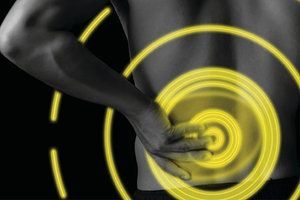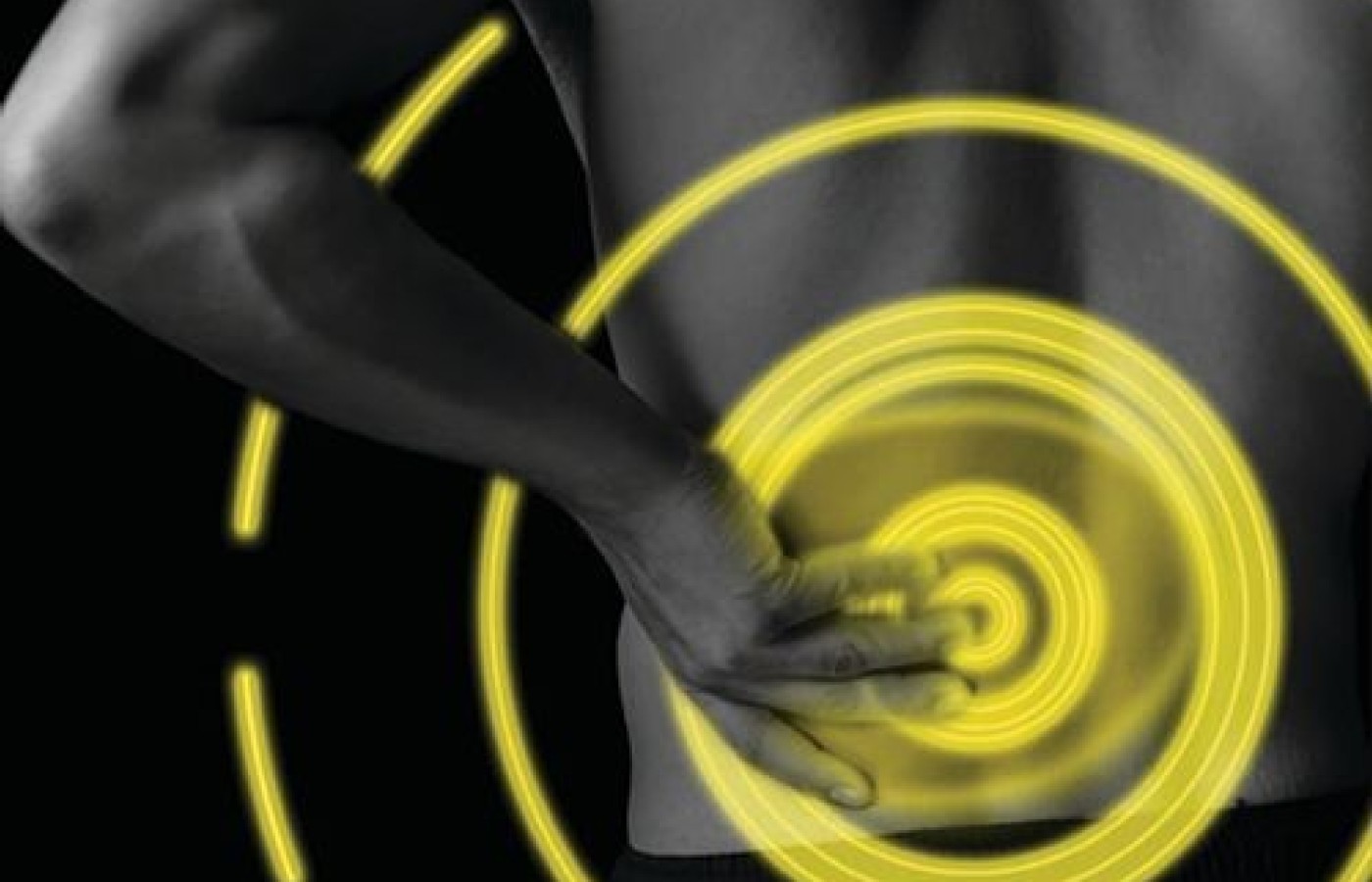Whether you accept it, avoid it or live somewhere in between, insurance coverage has become a defining issue for our profession. Patients increasingly expect to use their benefits, practitioners want to be compensated fairly for their time and expertise, and the system itself remains – at best – fragmented. The encouraging news is that coverage has expanded in meaningful ways. The challenging news is that reimbursement, across the board, remains inadequate.
Telemedicine Guide: A Low Back Pain Case Study (Pt. 2)
Editor's Note: Part 1 of this article appeared as a digital exclusive in the May issue. Both parts are excerpted from a more comprehensive blog post (available by clicking here) that also features corrective exercises, as well as a video presentation of the entire case study.
Functional Assessment
Posterior View: Ask the patient to put their hands on their hips and move into trunk extension. Examine for quality of movement, tissue imbalances and pain. In this case, the patient indicates pain with this motion by placing a fist at the L2-L4 spinal region. This body language in extension types of movements often indicate facet joint injury.
Lumbopelvic Rhythm (Lateral View): Examine for the innominate bone and spinal movements to be in sequence; does one segment move substantially more than the other segments? The patient's T12-L2 region moves posterior (extension) and does not move in coordination with the rest of the spine (moving into flexion). This unstable thoracolumbar junction coincides with the TLJS symptoms our patient traced earlier.

Trunk Flexion (Posterior View): Examine for imbalances in the pelvis. Observe for lumbar rotation, as this can indicate an imbalance in the psoas muscles and kidney jingjin.
Seated Rotation: Have the patient place their arms to the side and rotate the trunk to the left and to the right. Is there restriction of movement? Our patient has left pelvic rotation and with this seated position, has right trunk rotation. Typically, the patient will have more difficulty rotating in the direction of the pelvic rotation due to the counter-rotation in the trunk.
Stork Standing Test: We are using this test to challenge the lumbar facet joints, which we suspect may involved in the patient's pain. Have the patient use a nearby wall or chair to help balance themselves during this exam. Our patient feels pain in the soft tissues lateral to the L2-L4 vertebrae and indicated with her fist the lateral iliocostalis fibers, the lateral raphe and quadratus lumborum region. The practitioner could consider the affected sinew channels and points to relieve patient's pain. These points could include the accumulating (xi-cleft) and connecting (luo) points on the iliocostalis – UB, lateral raphe – ST and quadratus lumborum – LIV channels.
Thoracolumbar Fascia Rotation Test: This test examines the tissue relationship between the latissimus dorsi, the thoracolumbar fascia (TLF) and the contralateral gluteus maximus. In this case study, the patient has bilateral limited trunk rotation indicating locked-short latissimus dorsi, worse when rotating to the left. This thoracic rotation increased when the left gluteus maximus was activated. Consider treatment of the right latissimus dorsi, left gluteus maximus, the TLF and possible thoracic vertebral fixations contributing to zang fu pathology.
Gillet's Test: Describe to the patient how to perform hip flexion (to 90-100 degrees). From the posterior view, observe as the patient performs this motion and watch the hip and innominate motion. Our patient seems to have a left positive Gillet's sign. The practitioner considers prescribing GB 41– SJ 5 on the left prior to performing the exercises later to help correct this movement dysfunction.
FABER: Seated and Supine. Record the findings of where the pain is located. Our patient indicates pain in the gluteus medius / minimus region and also in the psoas lower attachment; the ligamentous hip joint capsule may also be involved.
Sacroiliac Rocking Test: We used this test to challenge the sacroiliac joint, which was negative, but did indicate pain in the psoas region and possibly in the hip joint capsule.
Overhead Squat (OHS), Posterior View: Is there an asymmetrical hip shift? This hip shift is often to the same side as the elevated ilium. Remotely, we can help to correct this imbalance through acupressure on specific points, in addition to specific exercises to tissues associated with the LIV and GB myofascial jingjin channels of the pelvis.
OHS, Lateral View: Look for arms falling forward, excessive forward lean, lumbar hyperextension or flexion. This particular movement was not performed with our patient, although it could be used as a follow-up assessment on the second visit. It is suspected that the patient will have arms falling forward and/or excessive hyperextension.
Diagnosis
- Kidney qi and qi and blood deficiency
- Right elevated ilium and associated myofascial channel imbalances
- Left pelvic rotation and right trunk rotation
- Bilateral anterior pelvic tilt (more on the right)
- Possible thoracolumbar junction syndrome
- L2-L4 region facet joint injury
Treatment Plan (initial visit)
- Strengthen kidney qi and systemic qi and blood.
- Balance the postural deviations
- Decrease pain in the UB, ST and LIV jingjin of the low back.
Treatment Protocol
Diagnosing the patient's internal pathology with a TCM differential diagnosis is imperative. Underlying conditions can be addressed through acupressure prescriptions, dietary recommendations and Chinese herbal medicine. Qi gong exercises are a great compliment to strengthening the body, and to balance qi and blood.
Acupressure Points: The following list of acupuncture and motor points are a combination of points to address the patient's constitution, their postural misalignments and their pain. The points are to be stimulated by the patient with digital pressure. It is best for the patient to stimulate these points twice a day and especially important to stimulate them prior to performing the prescribed exercise routine.
Manual stimulation to the points can be applied with many different tools; the fingertip or massage tools are suggestions. Ask the patient to apply a downward pressure with small, circular motions (circumference of 0.25 inch), examining for painful areas or restricted tissues. Massage for 5-10 seconds. The following are suggestions of points for acupressure:
- GB 41– SJ 5 on the left (positive Gillet's test)
- K3-K4 bilateral, as this helps to significantly decrease pain from lumbar facet joint injury
- SP 3–ST 40: This source/luo point combination helps to balance the internal and external obliques.
- UB 58, LIV 5, ST 40: luo points for the UB, LIV and ST channels
- GB 39.5 – LIV 4 for the right innominate bone that has the greatest anterior pelvic tilt
- LIV 3, P6, SP 6, ST 36 and LI 10: This classic point combination helps to move liver qi, calm the spirit, and tonify qi and blood.
- UB 22 – 24 region with yoga tune-up balls. This will help to activate the renal fascia that surrounds the kidney and loosen the low-back soft tissue that is constricted from the bilateral anterior tilt.
- Piriformis motor point bilateral with yoga tune-up balls: This will help to activate a "binding region" of the UB jingjin, and also help with pelvic balancing and decreasing local pain.
Exercises (initial visit)
For information on corrective exercises, refer to the full-length article, available with accompanying video on the website.
Prognosis
During the second telemedicine visit, re-examine all postural, orthopedic and functional exams; and compare to the initial visit for improvement in range of motion, nature and quality of pain. All exams should be 20-50 percent better in pain level if the diagnosis was correct.
It is a positive sign if the pain starts to centralize, i.e., the patient experiences more fixed region pain that becomes more central and not peripheral. It is also positive if the patient expresses that there is less migrating or traveling pain. These are all signs of improvement.
Also inquire if the patient has received and is taking the Chinese herbal formula that was prescribed. How are the dietary changes coming along?
Depending on the postural changes that were achieved, the self-acupressure, self-massage and therapeutic exercises can be modified to match the internal and structural changes.



